This article will serve as a critique of the issues within the Pokémon TCG and also as an expression of our desires for the future. This includes the possibility of resurrecting past mechanics that no longer exist, as well as bringing back cards that should receive new updates for long-lasting performance.
We will discuss that the game is not just about praise and positive aspects but that, in fact, there are problems related to the consistency of mechanics and their absence, along with neglect regarding long-term cards in the Expanded format.
Therefore, in this analysis, we will address areas in which the Pokémon Company could consider revisions in the TCG and share our opinions on the matter.
Valorization and Extension of the Validity of Ultra Rare Pokémon Types
Contextualization and Introduction
The Pokémon TCG has never placed much emphasis on long-term cards for the Expanded format, reserving a certain rarity type exclusively for the Standard format.
We can take the example of the emergence of the concept of Pokémon ex, which began in the entire Ruby/Sapphire block, within the validity period from 2003 to 2007 (from Ruby/Sapphire: Base Set to Ruby/Sapphire: Power Keepers) spanning 16 expansions.
We can also mention that during the Holon Phantoms expansions, there was a mechanic involving the type-swapping Pokémon known as Pokémon Delta (or Holon Pokémon).
Following that, we had Diamond/Pearl with 8 expansions and Platinum with 4 expansions (considering it as part of D/P since it is part of the Sinnoh block), totaling 12 expansions, which focused on Pokémon with the Lv.X rarity, lasting from 2007 to 2009.
In Heart Gold/Soul Silver, we had 5 expansions, plus Call of Legends, totaling 6 expansions, in a short period from 2010 to 2011. The rarity concept during this time consisted of "common" Pokémon with Prime evolutions and legendaries with cards that fit as Legends. This meant they featured two parts of a Pokémon, such as Lugia or Ho-Oh, or pairs like Rayquaza and Deoxys, Groudon and Kyogre, Cresselia and Darkrai, and so on.
In Black/White, there was a revamp of the concept of EX (uppercase), with a focus on featuring more legendary Pokémon with this rarity. Over the course of 13 expansions (including special collections), they attempted to follow in the footsteps of what was seen in the Ruby/Sapphire era.
In X/Y, there were 19 expansions (including special collections, McDonald's releases, and more), where the EX concept remained but introduced the mechanics of Mega Evolutions. However, evolved Pokémon were used as if they were basic, for instance, the Kanto trio, so that their Mega Evolutions could be incorporated as their stage.
With Sun/Moon, there was a return to respecting the evolution of Pokémon, starting from the basic stage as common cards. Only when they reached their final evolution, they were designated as GX rarity, with the introduction of the GX attack specialization, a new mechanic implemented in this era.
This period lasted for an impressive 21 expansions, spanning from 2017 to 2019, despite its relatively short duration, which included special collections and McDonald's promotions. The breaking point for this mechanic was the introduction of Tag Team GX cards, which began with Team Up and continued until Cosmic Eclipse, featuring Pokémon in groups, pairs, and trios.
In Sword/Shield, which started in 2019 and ended in 2022, we had a similar concept to the Mega Evolutions from X/Y, which means that evolved Pokémon were treated as basic, but with the designation V and gaining two forms, Dynamax or Gigantamax, with the designation VMax.
Subsequently, some gained the evolution with the designation VStar; in 5 Pokémon from the collection, we had a concept similar to the Legends cards, of combining parts to fit together (commonly referred to as "Exodia cards"), with 4 parts that needed to be in the discard pile to be summoned, called VUnion, which were: Mewtwo, Greninja, Zacian, Pikachu, and Morpeko.
Now, moving on to the most recent collection within the Scarlet/Violet block, as of the time of this article in 2023, we have returned to the same concepts as seen in Ruby/Sapphire, with the Pokémon ex for now. However, some of them have "abilities" known as Terastral, which are essentially a recycling of the Alpha and Omega ability concepts used in X/Y: Primal Clash.
These mechanics only last for one season, which means that Pokémon does not have long-term plans to extend these cards into the Expanded format. Even in the Standard format, when they do introduce such mechanics, they typically last for just one or two collections.
As a very recent example, we have the Mew VMAX FST 114, which is one of the few Fusion Strike Pokémon that truly has gameplay solidity. There are very few other examples. Besides it, which others would you think of?
"Well, we have the Deoxys PR-SW SWSH170, Latias PR-SW SWSH171, Meloetta FST 124 as good representatives."
Alright, but how frequently are they used? What positions do they hold in championship decks? What is the diversity in the number of Pokémon with this style of combat? Another strong contender, which can be counted on one hand and is as potent as Mew-VMax, is Hoopa V PR-SW SWSH176.
When the Fusion Strike collection ended, the diversity of other Pokémon with this style also concluded. In other words, the Pokémon Company does not have the habit of extending its mechanics and ideas for long periods, which can affect the Expanded format by making options quite scarce.
The Pokémon TCG differs significantly from Magic, for example, where cards, even though they have been released since the early 1990s, continue to interact with each other, and their lifespan is much longer.
Pokémon Lv. X and BREAK
In the Diamond/Pearl and Platinum block, overall, there was the introduction of Pokémon with enhancements, where they were also considered "stages," but could interpret attacks from previous cards, including Poké-Bodies and Poké-Powers (the old abilities used in Pokémon). This brought consistency with a range of uses, as we have the example of Darkrai Lv.X:

The possibilities were precisely to take a card like Darkrai MD 3, which had a Poké-Power and two attacks, and place Darkrai LV.X GE 104 on top of it, giving it more attack options and its Poké-Body.
Following this, we saw the recycling of this concept for Pokémon BREAK in X/Y, which was an excellent way to revisit this type of gameplay. However, only a few Pokémon had their BREAK versions.
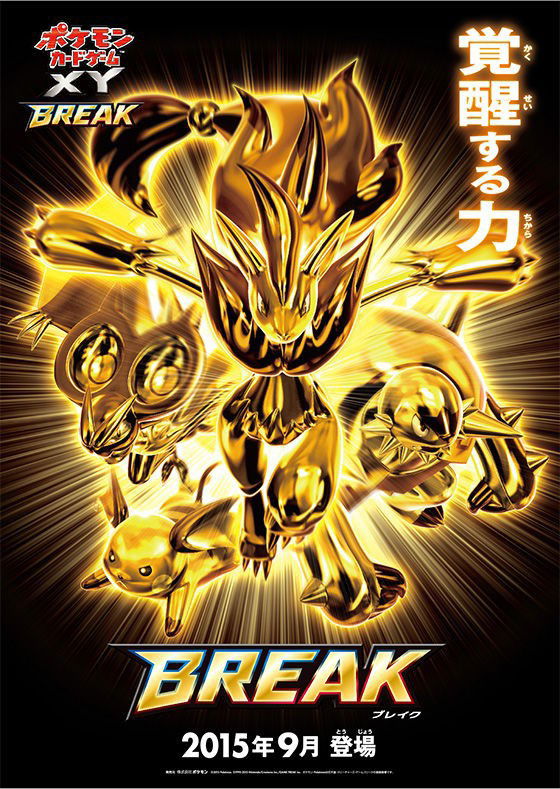
There were notable examples of cards that played with the BREAK style:






The Pokémon Company could have introduced more Pokémon during the X/Y block with this mechanic than in the final expansions of the same block. They could even recycle and bring them back in the future, since the trend in Scarlet/Violet is to try to respect the concept of evolutionary lines, with Pokémon going from basic to Stage 1 and 2.
In this regard, they could have introduced these BREAK enhancements to provide more sustainability for these "baby" Pokémon in the current block.
Legends
These are cards that represent the union of two pieces, typically symbolizing legendary Pokémon.
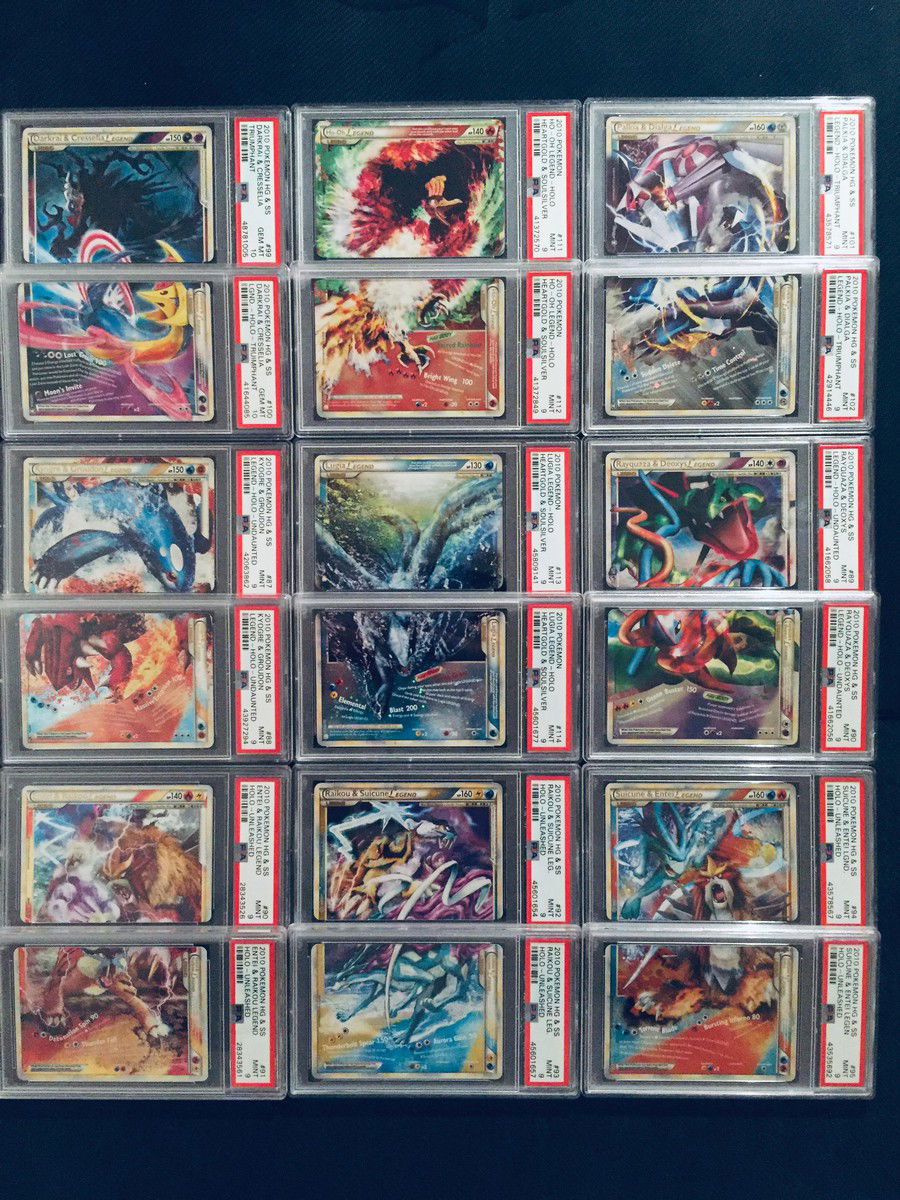
With this mechanic, we had two possibilities implemented in the future, which were:
1) Assembling two pieces to combine a Pokémon laid the foundation for V-Union. Unfortunately, we only had 5 Pokémon with this opportunity, and there wasn't much exploration of the mechanic. Only the Mewtwo-VUnion was more present in regional and international tournaments, and occasionally in world championships.
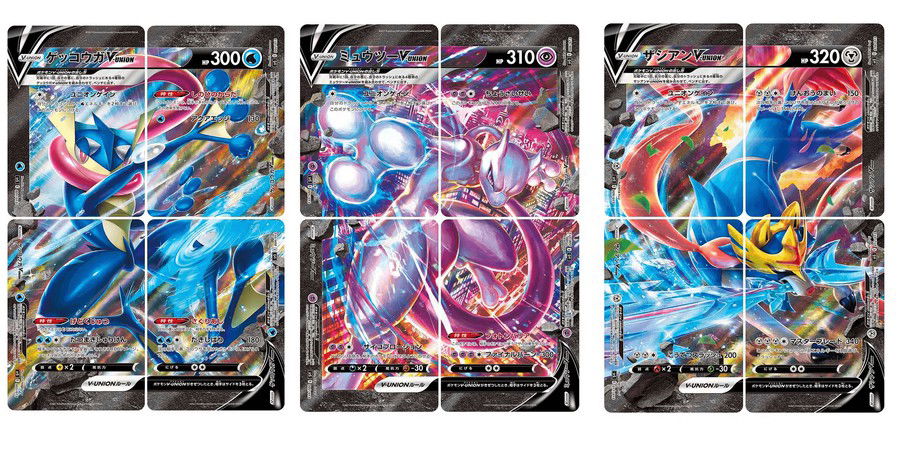
2) The union of Pokémon in pairs eventually led to the introduction of the Tag Team GX mechanic in Sun/Moon. These were powerful cards, but unfortunately, there were very few of them (31 cards, to be exact, not considering the FA, Rainbow, Secret Arts, and the Gold versions, which never made it to the West, such as the Japanese expansion Tag Team All Stars).
The Pokémon Company could have explored more combinations of Pokémon, which would have been exciting to see (even though the power creep of some of them was significant, like the famous ADP), but that wasn't the case.
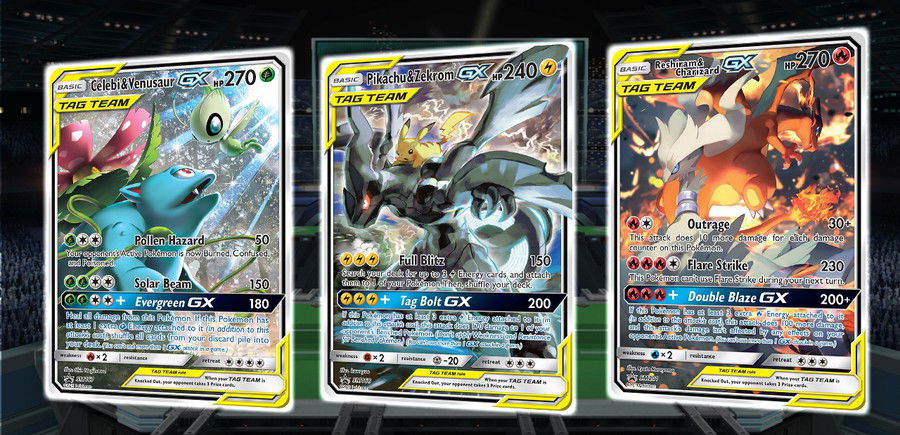
In summary, I wish this kind of mechanic was more frequent and, at the time of its introduction, better utilized.
Pokémon of Other Rarities: Shining, Radiant, Prism Star
If we consider the early expansions of the Neo era, where Pokémon with demanding energy costs were released, such as Shining Tyranitar N4 113 or Shining Charizard N4 107 (which was reflected in Crystal Pokémon like Charizard SK 146 during the E-Card era), this concept of energy taxation laid the groundwork for recycling in the Amazing Rare cards that debuted in Sword/Shield.
With some exceptions, the costs of these Amazing Rare Pokémon were reasonable, like Reshiram SHF 17, Yveltal SHF 46, and Kyogre SHF 21, for example. However, they didn't become as popular, mainly because there were only a handful of Amazing Rare cards.
But what about Shiny Pokémon? They have always been present, and it was always nice to see them make appearances in some collections, especially the "baby" ones, which were designed for gameplay, like Shining Celebi PR-SM SM79, which was by far the best card in the game during the Sun/Moon era and had the same ability as its Celebi-EX BCR 9 counterpart from Black/White.
However, the Pokémon Company didn't always make them efficiently playable. Sometimes, they had high energy costs and dealt little damage, as was the case with Shining Lugia PR-SM SM82. They could have, to some extent, made these Pokémon more prominent with more efficient attacks and abilities, rather than just relegating them to collector's items.
This leads us to Radiant Pokémon, of which 80% are extremely playable and well-used, except for Radiant Steelix LOR 124, which is one of the worst cards in this rarity. They could very well continue (and perhaps should) with Scarlet/Violet, as the mechanic of them being basic and put into play right away is interesting.
To conclude this topic, we have Pokémon categorized as Prism Star, which, if knocked out, go to the Lost Zone. This mechanic has returned after several iterations since Diamond/Pearl, HG/SS, Sun/Moon, and most recently in Sword/Shield. They have very interesting functions, with highlights like Volcanion ◇ FLI 31 and Tapu Koko ◇ TEU 51, as some of the best Pokémon in this category.
There are also few Pokémon that have had the privilege of being categorized with this rarity, and they could have been more frequent in the format, with at least 50 Pokémon introduced over the course of Sun/Moon.
Extension of the Durability of Pokémon Mechanics
"Abilities" through Tools Embedded in Pokémon

This type of implementation occurred in Diamond/Pearl, and it stayed there. These abilities were an allusion to the games where items were equipped to Pokémon, providing benefits, which was very interesting to see. Unfortunately, this concept disappeared after Diamond/Pearl.
They could even have some basic Pokémon with certain embedded items and not just create "bulk" cards, which the Pokémon Company insists on releasing in every expansion.
Below are examples of basic Pokémon with this type of implementation:

Alpha, Beta, Omega & Delta Abilities

Besides the abilities known as Poké-Powers and Poké-Bodies at the end of HG/SS, they were unified as permanent abilities in Black/White.
For those who didn't follow the earlier eras, Poké-Powers always needed to be declared when playing a Pokémon, while Poké-Bodies were automatic abilities of Pokémon when placed in play without the need for declaration.
However, in X/Y: Primal Clash, when the focus returned to the Team Magma VS Team Aqua storyline, some Pokémon received these ability benefits, resembling Poké-Bodies, with names like Alpha, Omega, and Delta, which were automatic for the Pokémon.
This type of mechanic could have lasted longer in the Expanded format, as it seemingly wouldn't have had a negative impact if future Standard format cards were introduced. Unfortunately, it wasn't continued.

This mentality of these abilities was recycled for the current generation in Scarlet/Violet, with the “Terastal” cards.

Single Strike, Rapid Strike, and Fusion Strike

Just like in every season within a collection, Pokémon always sets aside a good style of gameplay to emphasize the Standard format and the current expansion. This was the case with the Battle Styles and Fusion Strike blocks.
In these blocks, 70% of the Pokémon were left aside without an established use. Among the common Pokémon, focusing on star Pokémon, only the Urshifu, with their fighting styles, and Mew VMax were utilized. This lack of diversity in such an interesting mechanic could have been avoided, especially considering the wide range of Trainer cards, items, and tools available to complement the gameplay style.
Lost Zone
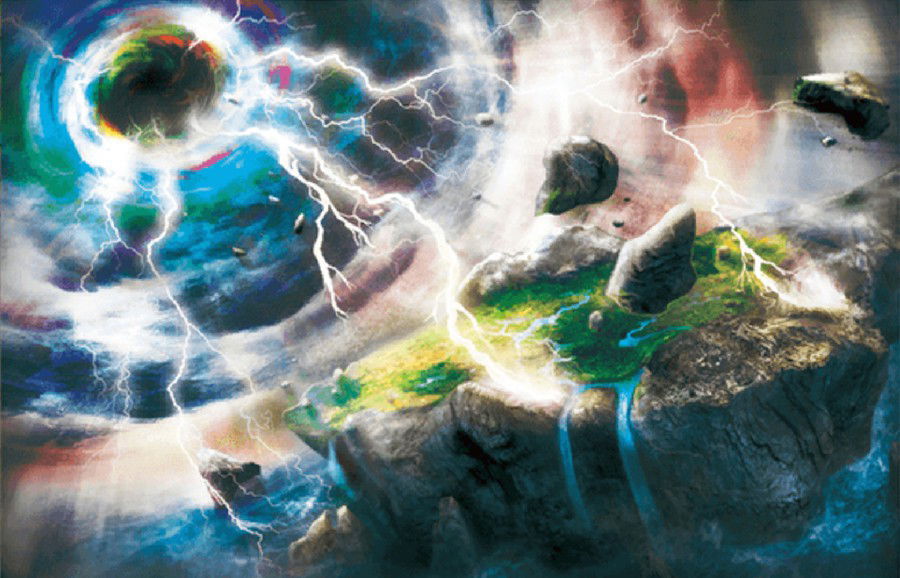
This mechanic should at least be a permanent feature in Pokémon, as it was heavily used in D/P and HG/SS, where it was quite rich. However, it disappeared, had little spotlight in Sun/Moon, and only in Sword/Shield did it make a comeback, reminiscent of what it was like during the D/P era.
Once again, it only works with specific cards, following the same "modus operandi": use Comfey LOR 79 for its ability, explointing Colress's Experiment LOR 155 to filter the deck, and always have Cramorant LOR 50 and Sableye LOR 70 as attackers, unless the spotlight is on Giratina VSTAR CRZ GG69.
Apart from that, how many other possibilities can you explore with cards as strong as Giratina VSTAR CRZ GG69 to gain such prominence in regional, international, and world championships?
It's quite challenging to see another Pokémon like this, once again showing that the company struggles to diversify its range of Pokémon to unlock their full potential. Instead, they focus on a select few to take the spotlight, making it almost predictable how the Standard metagame will be established. However, in the Expanded format, synergy with cards using the Lost Zone mechanic has gained more strength and notoriety.
Greater Focus on the West with Trainer Cards Featuring Signature Pokémon
During the Classic Base Set, we had two expansions focused on in-game characters, literally featuring the Kanto Gym Leaders and Team Rocket in the Gym Challenge and Gym Heroes expansions, along with the mechanics of their archetypes and signature Pokémon.

However, over the years, Japan has always given exclusivity to its own country and didn't pay much attention to the West, not fully releasing their thematic expansions. Instead, they limited exclusivity to their own market.
Only later would people become aware of this, which is the case with the Pokémon VS expansions, which would bring back characters from Kanto, Johto, and even the Elite 4, along with more Rocket cards, enriching the respective Trainer cards.
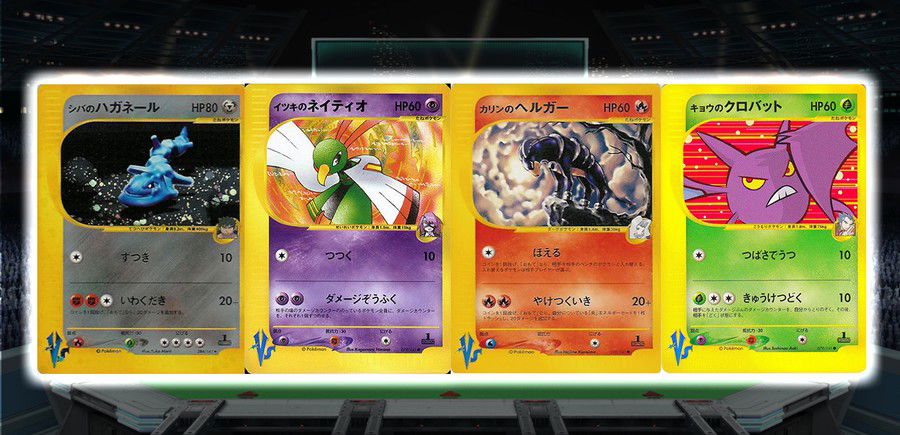
Additionally, during the Ruby/Sapphire era, some characters from the anime had their signature cards, continuing with the VS expansion, from the anime series on TV to movies, for example, with Ash's Pokémon.
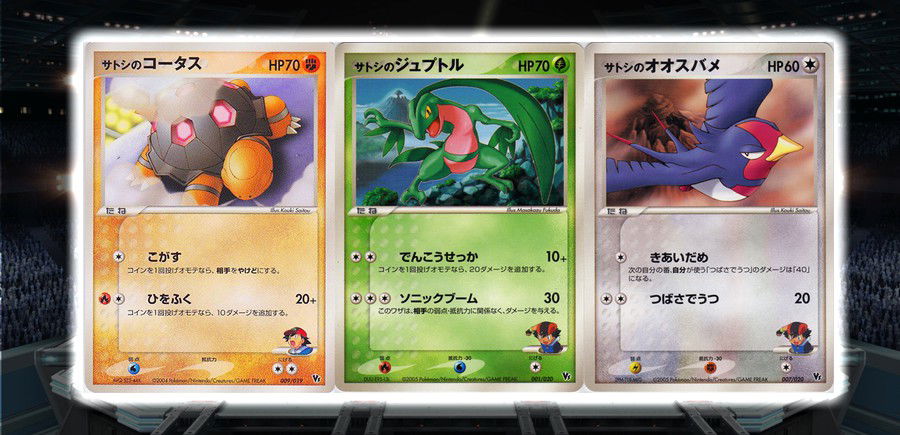
Subsequently, in the Platinum block, following D/P, finally in the West, we could focus on the Sinnoh Gym Leaders, as well as the Elite 4 and Team Galactic with their Pokémon.

However, there was still this limitation in the West of focusing only on the Japanese market with exclusive cards, for example, "Ash's Pikachu" being released only in Japan, and none of these cards appeared in the West.
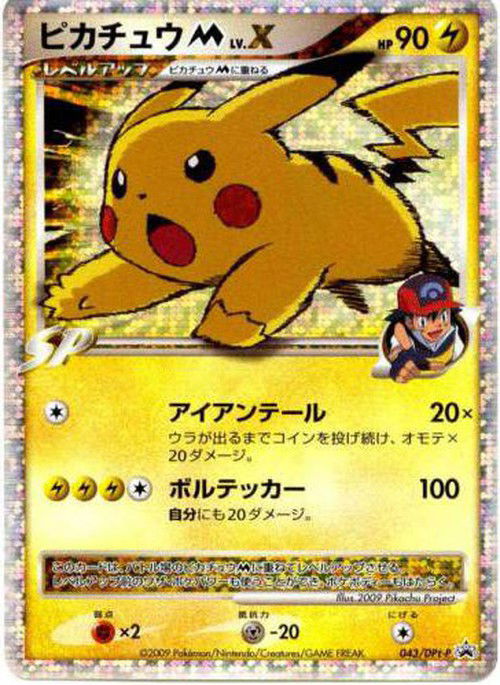
This problem still persists, with this restriction, until Sun/Moon, which featured trainer-themed Pokémon, in this case, Ash VS Team Rocket, where Ash had his Pikachu and Jessie had Mimikyu, exclusively in Japan.
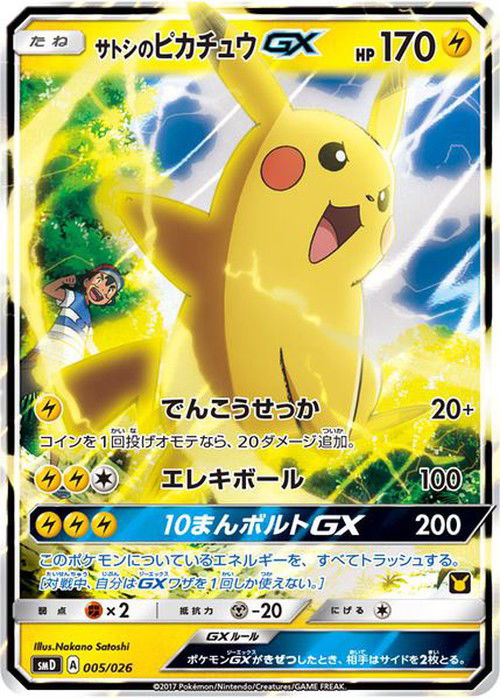
Restructuring Pokémon Structures
Pokémon with "Nerfed" Number of Attacks through Reprints and the Absence or Near Absence of Pokémon with Three Attacks
Another point where the Pokémon Company is falling short in card production is the number of attacks. Generally, we know that the average number of attacks a card can have is two, but it was rare for cards with three attacks to be more common in recent Expanded sets, from Black/White to Scarlet/Violet.
To understand these changes, let's look at some examples of Pokémon with three attacks, taking into account the Classic Base Set and Neo era:

We have these examples from the Ruby/Sapphire block, where there was a greater prevalence of Pokémon with 3 attacks and even up to 4 attacks with options (!):

This kind of diversity is sorely missed in the TCG, and the only example of a card that had a similar intention and was reprinted is Kangaskhan from R/B: Fire Red/Leaf Green and S/M: Dragon Majesty.

We have examples of some of these reprint cards that originally had a balance of abilities and at least two attacks but lost one attack over time - which is bad because, in cases of matches against opponents using attacks related to "Amnesia," the Pokémon loses opportunities to respond to the opponent. I'll use two examples:


Absence of Dual Typings and Revamping Weaknesses and Resistances
With the "Power Creep" that Pokémon received in Sun/Moon, especially with the Tag Team GX mechanics, many Pokémon had HP in the range of 240 to 300, and this continued into Sword/Shield, with Pokémon reaching 330 to 340 HP.
This also continues in Scarlet/Violet with the ex cards. The meta is affected by this because they generally work with specific archetypes for each generation.
"But what do you mean by archetypes in each generation?"
Notice that in Sun/Moon, there was a significant focus on Fire-type Pokémon, with many cards that supported them, such as Welder UNB 189, Fire Crystal UNB 173, Fiery Flint DRM 60, Giant Hearth UNM 197, and Heat Factory ◇ LOT 178, all revolving around Reshiram & Charizard-GX PR-SM SM247.
At the beginning of Sword/Shield, we had more cards focusing on Eternatus VMAX SHF SV122, and soon after, the focus shifted to give more value to the Water type, with a greater predominance of the Sobble, Drizzle, and Inteleon line, Frosmoth SSH 64, Capacious Bucket RCL 156. As attackers, we have the standout Origin Forme Palkia VSTAR CRZ GG67.
So, in each generation, the metagame becomes very stereotyped, once we discover which elements predominate in the format. Based on that, there's a migration of Electric-types with Miraidon ex sv1 253 to counter Water-type Pokémon, and in the future, they will be countered by Fighting-types, creating a vicious cycle.
But what if we could go back to the origins of the X/Y: Steam Siege cards with dual typings? This way, these Pokémon could have the advantages of both types, as in these cards:

However, even with type advantages, it wouldn't be fair to apply only one weakness or resistance. Therefore, it would be ideal to go back to the origins of the Pokémon ex cards from Ruby/Sapphire, which had this concern, as shown in the examples below:

- Charizard, being a Fire/Flying type, would be vulnerable to Water and Electric-type moves.
- Blaziken, being a Fire/Fighting type, would be vulnerable to Water and Psychic-type moves.
- Venusaur, being a Grass/Poison type, would be vulnerable to Fire and Psychic-type moves.
- Steelix, being a Steel/Ground type, would be vulnerable to Fire and Fighting-type moves but would have resistance to Grass and Electric-type moves (as a clear example of dual resistances).
- Tyranitar, being a Dark/Rock type, would be vulnerable to Grass and Fighting-type moves but would have resistance to Psychic-type moves.
With these examples of dynamism, applying dual typings to these high-rarity Pokémon, such as what GX, V, and ex cards should have been, the game would become more dynamic and not locked into fixed types, where the meta becomes stale and saturated.
This would allow players to enjoy building decks with different Pokémon and even have the option of playing with their favorite Pokémon in a competitive and meaningful way.
Definition of Types
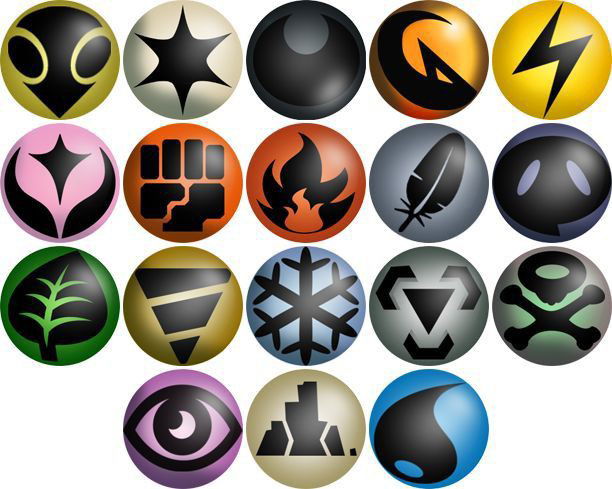
Generally, the types that suffer the most within the archetypes are Fighting, Psychic, Water, Grass, Psychic, and Poison.
- The Fighting type includes itself, as well as Ground and Rock types.
- The Psychic type includes itself, as well as Ghost and Fairy.
- The Water type includes itself, as well as Ice.
- The Grass type includes itself, but also includes Insects, and for a long time, some Poison types.
- Psychic, in addition to itself, has also sometimes encompassed Poison types.
- And Poison is now within the "Dark" archetype - which doesn't make much sense.
Pokémon should establish new types for them to have their individuality, just like the Dragon type, which achieved this after a long time of being colorless (and sometimes, with no weaknesses).
Later, they started having a weakness to the colorless type, but only in Black/White did they gain their own type, even though they didn't change the basic energies to attribute to the Pokémon.
So, as in the example mentioned, they could have their types ready and still use existing energies, so as not to disrupt the game and rebuild everything from scratch.
A recent problem that has arisen is with Psychic-type Pokémon, which used to only have a weakness to their own type, instead of also having a weakness to the Dark type. Only the "Ghost" Pokémon that were within the Psychic circle had this weakness.
Now, with Sword/Shield onwards, they all have a weakness only to the Dark type, which is not ideal, as it would be healthier to keep weaknesses to both types: Psychic and Dark, in addition to adding resistance to Fighting and Colorless types.
We have the example of Gengar ex back in the days of R/B: Fire Red/Leaf Green, which is a perfect definition of how Pokémon should make cards and how we wanted them to be from Scarlet/Violet onwards.

Return of the Fairy Type
For fans of the archetype, it suffered the most because it only performed well in two blocks (X/Y and Sun/Moon) and disappeared in Sword/Shield, leaving Dragons with full strength and no restrictions.
Before, the Dragon type had a weakness to itself in Black/White, but in X/Y and Sun/Moon, they received a weakness to the Fairy type, which balanced the game. Given this, with the new releases, Dragons no longer have to worry about taking double damage due to the absence of this weakness.
If we assume that there might be a Dragonite ex in Scarlet/Violet in the future, what will the player have to do to deal 330 damage and knock it out? It will be quite difficult.
So, with the topics mentioned above, it would be useful for Dragons to have weaknesses to both types (their own and Fairy) and the return of the type, so that the entire game system becomes more equal in opportunities and deck-building, especially since, in the Sun/Moon block, there were many tools that inhibited damage from Fairies by Pokémon EX, which apparently also fall into the same category as ex.
Trainer Cards
Supporters with Dual Effects or More Options
Although we had possibilities of using cards with multiple effects, such as Serena SIT 164 and Roseanne's Backup BRS 148, it is still quite scarce for the direction that the TCG is heading.
Although the peak of these Supporter cards was with the introduction of Tag Team cards, such as Mallow & Lana CEC 198, Cynthia & Caitlin CEC 189, and Guzma & Hala CEC 193, it would still be much better to have more cards with these choices of use to make the game much more dynamic and provide more space for other cards in the deck, enriching the tactics.
We could, for example, have more cards like Tate & Liza CES 148 and Giovanni's Scheme BKT 138.
Prism Star Supporters

The Prism Star mechanic, already mentioned with Pokémon above, was overshadowed, and Supporters of these rarities suffered the same fate: a limited variety of cards that were rarely used frequently and could be expanded without harming anything in the Standard format in the long run, enriching the Expanded format as well.
If we had a card like Lance ◇ DRM 61 with an effect for Dragons, for example, as a member of the Kanto Elite 4, wouldn't it be cool to also have cards for the Lorelei, Bruno, and Agatha Prism Star? Or even cards for the Elite 4 members of other regions? And for the champions of each region with exotic and unique effects?
Return of Some Pokémon Items and Tools
Here are three types of tools that I would like to mention:
- Technical Machines, like Multi Technical Machine 01 pop2 9, Technical Machine TS-1 LA 136, Technical Machine TS-2 LA 137, for example, which were extensions of Pokémon's attacks. It was a very interesting aspect to use as strategies, and they could make a return.
- GX Attack Tools:

With only two expansions from Sun/Moon that were released (Unified Minds and Cosmic Eclipse), these cards had the potential to allow any "baby" Pokémon to have GX attacks, like the powerful Tag Team. They only made 3 of these Tools and only near the end of the block, which was a tremendous waste.
They could have been implemented in Team Up, with at least 3 Tools in each expansion, and even in the special Hidden Fates collection, to provide more possibilities for cards with this strategy.
- Tools with VPower/VStar usage:

These cards suffer from the same problems as Z-Move Tools; they only appeared at the end of the block, during the conclusion of Sword/Shield, and were limited to only 3 of them, while the VStar mechanic was introduced in Brilliant Stars. Since then, they could have been better developed to increase the range of possibilities for players.
- The return of ACE SPEC cards, which is also a great mechanic to only allow one in the deck. It was something so simple that would not harm the long term, if this rule type were to be maintained for the Standard format and further enrich the Expanded format.
And in this case, we had the return of this mechanic announced at the Yokohama World Cup at the beginning of the second half of 2023, where you can check out clicking here on the topic of the return of this mechanic, which finally, the Pokémon Company decided to revive this, but which took almost more than 10 years to look at that.
Stadiums with Dual Functions
Cards like Parallel City BKT 145, Chaos Tower FCO 94, and Reverse Valley BKP 110 are great Stadium cards that have an interaction of choices for effects based on what the player wants to put into play, and this has been sorely missed in the Pokémon TCG in recent years. This could be revisited and even encouraged to create more of them, to enrich not only the Standard format but also the Expanded format.
More Prism Star Stadiums

This is another type of Stadium that was very good during its time in the Standard format and could have continued with the Lost Zone mechanics (reinforcing the topic I mentioned above).
They forgot about the archetypes Water, Fighting, Psychic, Steel, and Dragon having their own Prism Star versions, something that Pokémon could have continued, which would have enriched the metagame within the Standard format in the long run and enriched the Expanded format with more options.
Conclusions
Basically, Pokémon relies on recycling and does not have good sustainability with the implementation of long-term mechanics, which hinders the tremendous potential that the cards have.
They could even copy what worked in Magic, where cards from the 1990s can interact with cards from the present day, with careful and caring revisions.
There is also a certain disregard for the western market with some collections, showing again that they can be very biased and dangling to their interests and not consider the well-being of the game or how to build a more competent and efficient legacy with the TCG, even though it can indeed have its potential refined (with the existing foundations).
Well, now it's up to you: do you have any reservations about the TCG itself? What could change for the better? Are there any flaws that I haven't seen but that you've noticed, and that they should reconsider to improve the game format, both in Standard and Expanded?
What would you like them to bring back, considering the good things they did in the past for the current format? You are welcome to comment below on the website!
Until next time.

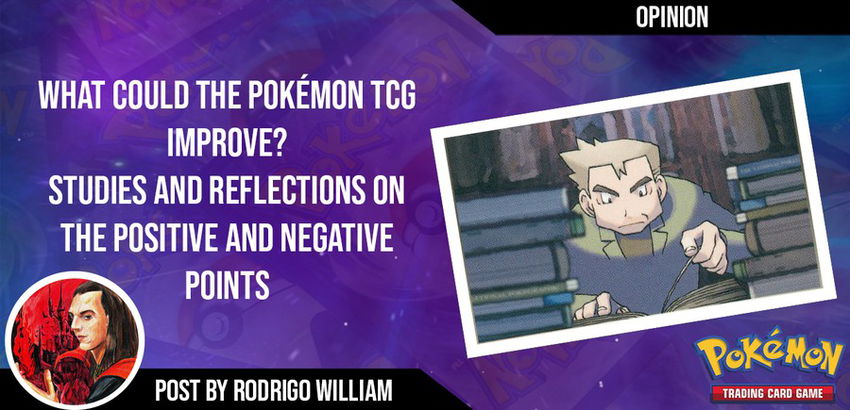







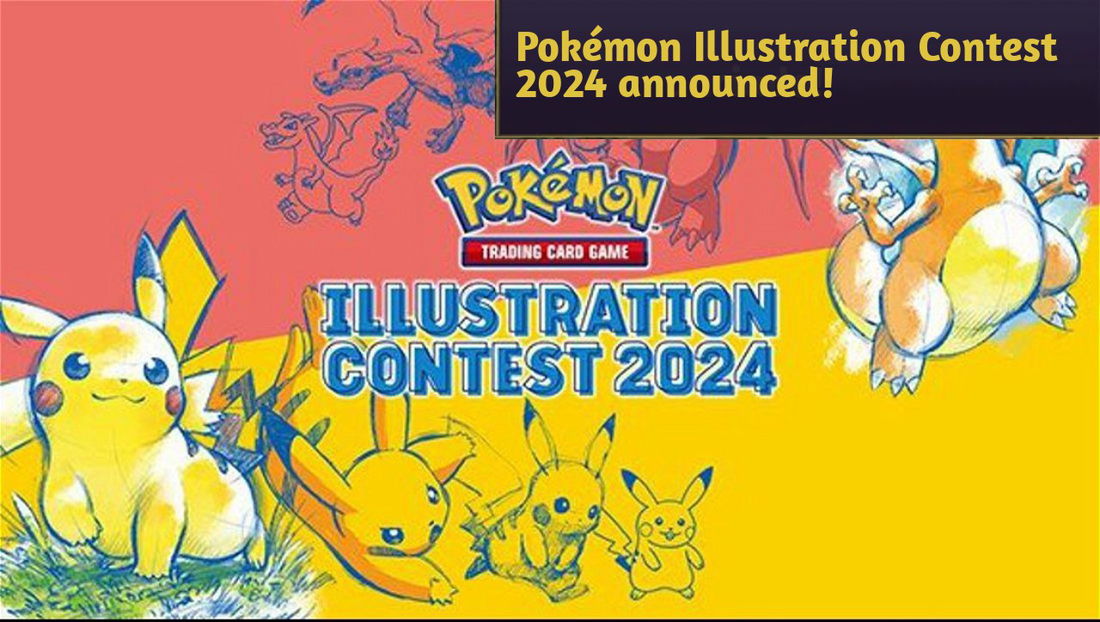
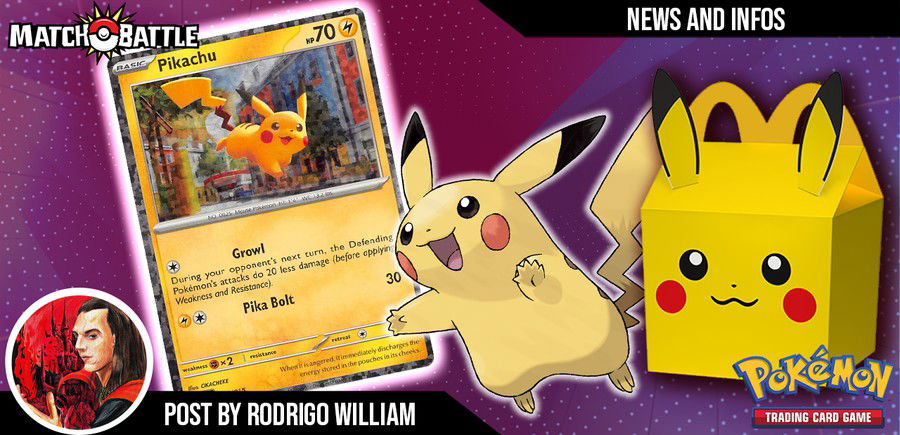

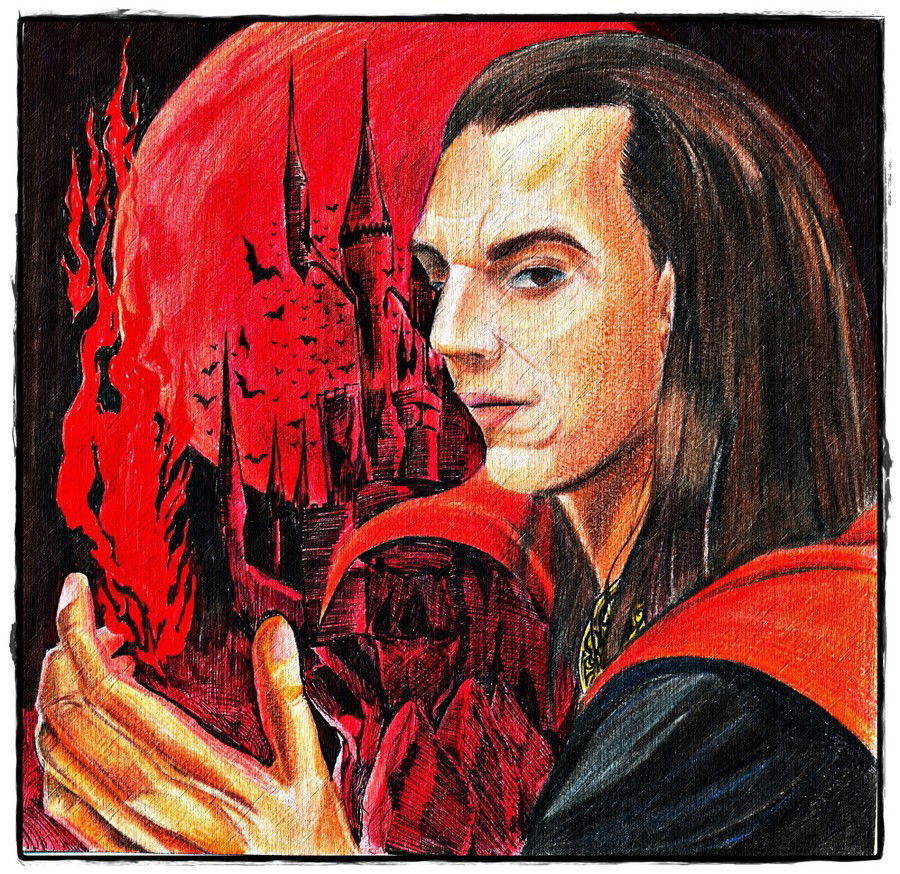

— Kommentare 0
, Reaktionen 1
Sei der erste der kommentiert